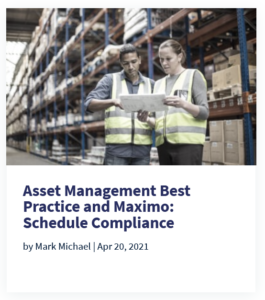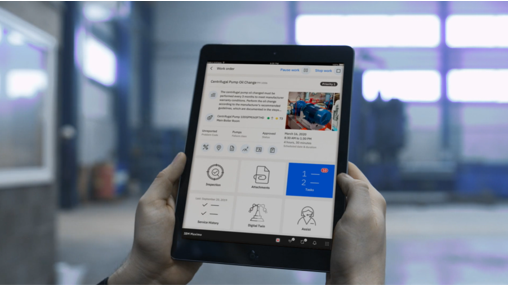We have all heard the saying if you can’t measure it, you can’t effectively manage it. Nothing could be more true when considering the handling of hundreds and even into thousands of jobs created each month. This is the third of 3 articles outlining the configuration of Maximo to align with a number of Asset Management best practice elements.

Part 1 |

Part 2 |
In this blog, we will be mainly focusing on Maintenance Management Reporting Tools. Maximo has a number of effective logical ways of helping you. Regardless of your role in the organization, it will manage the areas you are responsible for. The payoff in using these tools effectively is, less important maintenance lands on the backlog. This leads to less reactive work and a more structured and planned environment.
An overview of Management Reporting Tools
Maximo collects vast amounts of data through its various applications. It enables you to transform, visualize and act on the data through its Analytic and Business Intelligence (BI) suite of tools. With increasing industry emphasis on big data and analysis, it is imperative that analytic tools are readily available to answer the myriad of questions that are continually presented to you. Questions and answers enable you to realize the full power and benefits of applying Maximo in your organization. Maximo provides an extensive portfolio of analytic management reporting tools to do this. These tools meet the evolving and varying skill sets of your users, their use cases and preferences, along with the business needs and regulatory requirements of your organization.
Application analysis tools are tightly embedded within the Core Maximo applications. They are frequently accessed by users multiple times a day to provide listing of records and statuses. Their format is fixed to either a record listing, or a small range of chart options. Each are powered within Maximo’s System Framework and this can seamlessly work with external products. These tools frequently use the application queries, like Reactive work to complete today, Overdue Purchase Orders, or My kits to issue. Applying the application query capitalizes on the existing functionality – and provides a range of format options to see the results. After that, the results can be an exported csv or xls file, a chart or listing of records on the start center, or a performance metric.
The individual start center
The first tool to consider is the individual start center. This is the first screen a user can see after logging into the system. The screen summarizes the workload that person and perhaps their teams have responsibility for. This can be setup with a variety of KPI derived gauges, bar graphs and pie charts, supplemented with list views. The items in the list view can be color coded to highlight issues like contravening Service Level agreement’s. Much like any dashboard, the start center can be setup for that quick view of what is going on now. With drill down functionality it can be used to delve into the detail to pinpoint problem areas.
The approach typically is to set this up around the roles in the business and then assign to the appropriate users. For example, you might have a planner/scheduler configuration that would have quite different information displayed than perhaps the trades-person.
Data queries made more flexible with Maximo
Users often want the flexibility to query the data themselves, often to answer an immediate need. To assist with this Maximo is a module named Quick reporting (QBR). The module has a user friendly and guided GUI so you don’t need to be an expert writing queries to create a report. QBR’s enable users to create their own unique reports by selecting columns. Then specifying sorting and grouping, and the query the report will run against. Once the user saves the report, this information is fed through an API to create an xml report design file. The file is then executed thru the report engine. Users can also incorporate calculations should that be required.
The BIRT reporting option provides those more structured and scheduled reports. These answer the standard business requirements and there are approx. 120+ standard reports included as part of the initial installation. Moreover, these can be scheduled to be emailed direct to management email addresses at the start of each day or each week. As a result, this is extremely useful for checking in on team and contractor performance.
Tools that support the importance of reporting
Growing enterprise-wide reporting requirements has fueled the emergence of data cube reporting tools. Examples such as Microsoft’s PowerBI and Tableau products have been widely adopted and provide further flexibility around reporting. PowerBI licensing is often wrapped into other Microsoft subscriptions and is becoming a commonly utilized tool. The integration between Maximo can be easily setup using the external report integration (ERI). With ERI, users can access these reports directly from the Maximo applications. For example, a listing of PowerBl reports can appear within the Work Order application. After selecting one, they are seamlessly launched and authenticated to the PowerBI Server, where the PowerBI report would display in a separate browser session.
Further to these standard tools is the emergence of AI & ML tools and IBM’s Watson product is becoming more integrated with Maximo. AI tools are designed to open up analytics to the world of exploration. Unlike reports, where predefined fields are selected for analysis and content is monitored and managed by teams within the business, user analytics exposes fields or relationships that the user may otherwise not have thought to explore.
Maximo’s Open Reporting Architecture has been designed to enable you to utilize the reporting tool or tools that is best for your unique business, regulatory, user and project needs.
Finally, should you require any further information on how Maximo reporting can help your business achieve Asset Management best practice reach out to BPD Zenith.




